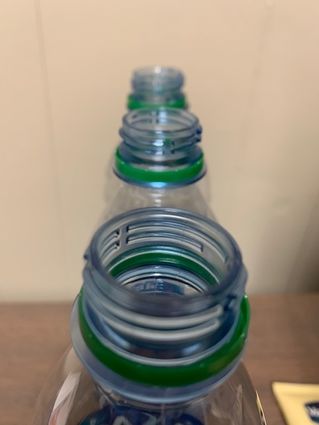Over Morning Coffee
Recycling plastic makes us feel good, but it won't save our planet
April 1, 2021
The world is drowning in plastic waste. Millions of animals, birds and sea creatures die every year from ingesting bits of plastic or becoming entangled in plastic litter. Every year, over 8 million tons of plastic waste makes its way into the world's oceans. When plastic has broken down into microplastics, it enters the food chain and becomes a threat to all of us. Nature is being destroyed by plastic waste.
Ironically, plastic was invented to protect nature from human destruction. In 1869. John Wesley Hyatt won a contest sponsored by a billiard company seeking a substitute for the ivory from poached elephant tusks used in making billiard balls. Hyatt combined cotton fiber with camphor to make celluloid, the first plastic-like substance. His discovery evolved into the strong, lightweight and flexible plastic we use today made from chains of synthetic polymers found in the carbon atoms of petroleum.
Because it's made from petroleum, plastic never goes away. National Geographic estimates it takes 450 years for plastic to decompose. In other words, almost all of the plastic created since its invention over 100 years ago still exists in some form on the planet. Over 8.3 billion tons of plastic have been produced since 1950. Today, 81.4 percent of the world's discarded plastic ends up in landfills or becomes litter, 13.4 percent is used in energy recovery, and only 5.5 percent is recycled.
It is generally assumed that recycling solves the problem of plastic waste, but that is not the case. In truth, 91 percent of plastic is not recycled because recycling isn't profitable. Not all plastics are alike; some hold value for recycling, others do not. Only high-density polyethylene, like that used to make pop bottles, has a decent recycle value. Smaller pieces measuring less than 3-inches, such as bottle caps, have no value and are incinerated or sent to landfills. The bulk of plastic waste is middle-grade quality which is of such low value that very little of it is reused.
This mid-grade plastic – usually mixed with other types of plastic in a recycling bin – is crushed, baled and sent for recycling. The United States, along with the UK and Canada, ships over 1 million tons of plastic waste overseas every year. China imported our plastic waste until it became an environmental and health hazard.
Now, it is shipped to the world's poorest nations such as Bangladesh, Ethiopia, Turkey and Malaysia. Here, scrap-pickers can earn $6.50 per day sorting through disgusting piles of our garbage. They search for useable pieces of plastic that can be recycled for a small profit. The developing nations are becoming overwhelmed with imported garbage, and the bales are piling up on land and off-shore.
Over 380 million tons of plastic are produced annually worldwide. Of this massive amount, 50 percent goes into single-use products. Packaging material accounts for 40 percent of single-use plastic. Worldwide, 5 trillion plastic bags are discarded every year. Of the 1 million single-use drinking bottles purchased every minute, less than 7 percent will be recycled into new bottles. The remainder will end up as litter or in landfills.
The current plastic recycling program makes us feel good, but it won't save our planet. We must individually become dedicated to solving the plastic pollution problem. A good start would be to wean ourselves away from using disposable water bottles, plastic wrap, bags, straws, cutlery and coffee cup lids. All of these can be replaced with reusable substitutes.
We must also be more conscientious about sorting plastic waste correctly by type according to the Resin Identification Code (RIC), which can be found in a triangle on the product. Municipalities can help by providing adequate containers for recycling plastic according to RIC numbers. Too often, all types of plastic are tossed into the same recycling container marked "Recycle," sitting next to other bins for glass, paper and metal.
Innovation is key to discovering better ways to recycle plastic and new uses for the product. India, for example, melts discarded plastic to fill potholes. An inventor in the UK took this one step further and discovered a way to use recycled single-use plastic for road construction. Researchers have discovered ways to make plastic biodegradable for single-use items such as 6-pack rings on beverage containers. A company in London has even discovered a way to make edible drinking bottles.
Plastic pollution has become a global crisis, but it's a problem that can be solved. Even though there are many new and exciting ideas for utilizing recycled plastic, it doesn't change our personal responsibility to use less plastic and properly dispose of it. The world will celebrate Earth Day later this month. This might be a good time to pledge to do whatever it takes to stop the growing threat of plastic pollution.
Bonnie Ewoldt, of rural Milford, is a retired teacher, news junkie and freelance writer. Her opinion pieces have appeared online and in newspapers across Iowa and neighboring states. Visit her blog at http://www.bonniesblogbox.wordpress.com.







